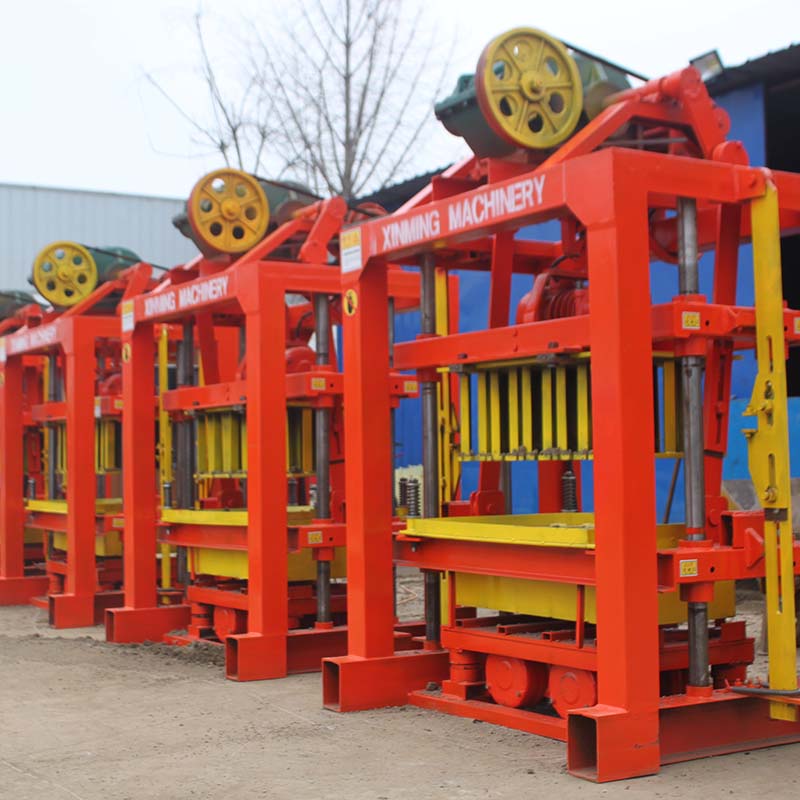
Image source:Aiwei block machine
The construction industry has witnessed a significant transformation in recent years, driven by technological advancements that enhance efficiency, quality, and sustainability. In this context, innovations in hollow block making machines have played a pivotal role. Hollow blocks, also known as concrete masonry units (CMUs) or cinder blocks, are essential components in modern construction. They are used in various applications, from residential buildings to infrastructure projects. Innovations in hollow block making machines have revolutionized the production process, making it more efficient, cost-effective, and environmentally friendly.
Introduction
Hollow blocks have been a staple in construction for decades due to their strength, durability, and insulation properties. Traditionally, these blocks were made using manual or semi-automatic processes, which were labor-intensive and time-consuming. However, as technology has advanced, so too have the methods and machinery used in hollow block production.
This article explores the recent innovations in hollow block making machines, highlighting their impact on the construction industry. We will delve into the various aspects of these innovations, including automation, sustainability, quality control, and their role in shaping the future of construction.
Automation: Increasing Efficiency and Precision
One of the most significant innovations in hollow block making machines is the integration of automation. Automation has revolutionized the manufacturing process by significantly increasing production rates and ensuring consistent block quality.
1. Fully Automatic Operation
Modern hollow block making machines are designed for fully automatic operation. This means that the entire production process, from raw material feeding to block stacking, is automated. Workers are no longer required to perform manual tasks, such as mixing concrete, filling molds, or removing blocks from molds.
2. Precise Block Dimensions
Automation ensures precise control over the dimensions of each block. This level of precision is challenging to achieve consistently with manual methods. The result is uniform, high-quality blocks that meet strict industry standards.
3. Increased Production Capacity
Automated machines can produce a significantly higher number of blocks per hour compared to manual methods. This increased production capacity is essential for meeting the growing demand for construction materials in rapidly developing urban areas.
Sustainability: Eco-Friendly Practices
Sustainability is a key consideration in modern construction. Innovations in hollow block making machines have led to the development of eco-friendly practices that reduce waste, energy consumption, and environmental impact.
1. Recycled Materials
Some advanced hollow block machines are designed to use recycled materials as part of the raw mix. This reduces the need for virgin resources and minimizes waste, making the production process more sustainable.
2. Energy-Efficient Designs
Newer machines are equipped with energy-efficient motors and components, reducing overall energy consumption. Additionally, innovative curing techniques require less energy while ensuring proper block strength.
3. Reduced Emissions
Automation not only improves efficiency but also helps reduce emissions associated with the manufacturing process. Automated machines produce fewer pollutants compared to traditional, labor-intensive methods.
Quality Control: Ensuring Durability
Consistent block quality is crucial in construction to ensure the structural integrity and longevity of buildings. Innovations in hollow block making machines have led to improved quality control measures.
1. Real-time Monitoring
Advanced machines are equipped with sensors and monitoring systems that continuously assess the quality of blocks during production. Any deviations from quality standards can be identified and corrected in real-time.
2. Uniform Compression
Precise compression of the concrete mix is vital for block strength. Innovations in machine design allow for uniform compression across all blocks, reducing the likelihood of weak spots or structural defects.
3. Customizable Block Properties
Some machines offer the flexibility to adjust block properties, such as density and insulation capabilities, to meet specific project requirements. This customization ensures that the blocks are tailored to the intended application.
Future Prospects: Shaping the Construction Industry
The innovations in hollow block making machines have far-reaching implications for the construction industry, both now and in the future.
1. Increased Construction Speed
With automation and higher production capacities, construction projects can progress more rapidly, helping to meet the ever-growing demand for infrastructure and housing.
2. Reduced Labor Dependency
As machines take on more tasks, the industry may experience a reduced dependency on manual labor, potentially addressing labor shortages and improving worker safety.
3. Enhanced Sustainability
The integration of sustainable practices in hollow block production aligns with global efforts to reduce the environmental impact of construction. This trend is likely to continue, with more eco-friendly technologies and materials being adopted.
4. Customization and Innovation
The ability to customize block properties and designs opens up new possibilities for architects and builders. Innovative block designs can enhance both aesthetics and functionality in construction.
Conclusion
Innovations in hollow block making machines have ushered in a new era of construction. Automation, sustainability, and quality control have become integral components of modern block production. As the construction industry continues to evolve, these innovations will play a pivotal role in meeting the demands of urbanization, sustainability, and quality assurance. Hollow block making machines are not just machines; they are the building blocks of a more efficient, eco-friendly, and innovative construction future.
